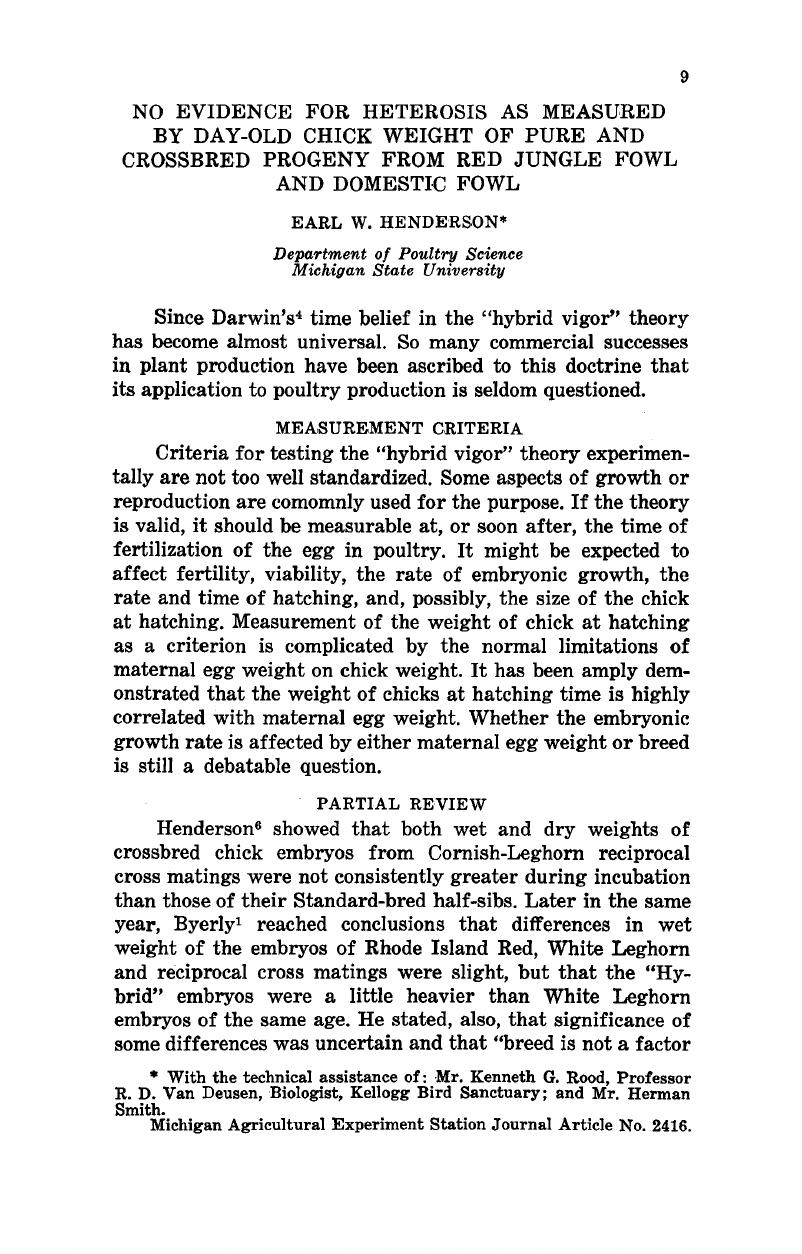No CrossRef data available.
Article contents
No Evidence for Heterosis as Measured by Day-Old Chick Weight of Pure and Crossbred Progeny From Red Jungle Fowl and Domestic Fowl
Published online by Cambridge University Press: 18 September 2007
Abstract
An abstract is not available for this content so a preview has been provided. Please use the Get access link above for information on how to access this content.

- Type
- Research Article
- Information
- Copyright
- Copyright © Cambridge University Press 1962
References
1. Byerly, T. C. The effects of breed on the growth of the chick embryo. Jour. Morph. and Physiol. 50 (2):341– 359 1930.CrossRefGoogle Scholar
2. Byerly, T. C., Helsel, W. C. and Quinn, J. P. Growth in weight and cell number. Genetic effects in the chick embryo and chick. J. Exp. Zool. 78 (2):185–203. 1938.CrossRefGoogle Scholar
3. Blunn, C. T. and Gregory, P. W. The embryological basis of size inheritance in the chicken. J. Exp. Zool. 70: 397– 414 1935.CrossRefGoogle Scholar
4. Darwin, Charles 1976. The effects of cross- and self-fertilization in the vegetable kingdom. John Murray London. (Cited by Fisher, R. A., 1935 The design of experiments. Oliver & Boyd, London.Google Scholar
5. Gregory, P. W., and Castle, W. E. Further studies on the embryological basis of size inheritance in the rabbit. J. Exp. Zool. 59: 199– 211 1931.CrossRefGoogle Scholar
6. Henderson, E. W. The influence of temperature and breeding upon the rate of growth of chick embryos. Mo. Agr. Exp. Sta. Res. Bul. 149. 1930.Google Scholar
7. Henderson, E. W., —A silver laced chicken with Cornish ancestry. Mich. Ag. Exp. Sta. Quart. Bul. 35: 125– 129 1952.Google Scholar
8. Jull, M. A., and Heywang, B. W. Yolk assimilation during the embryonic development of the chick. Poul. Sci. 9: 393– 404 1930.CrossRefGoogle Scholar


